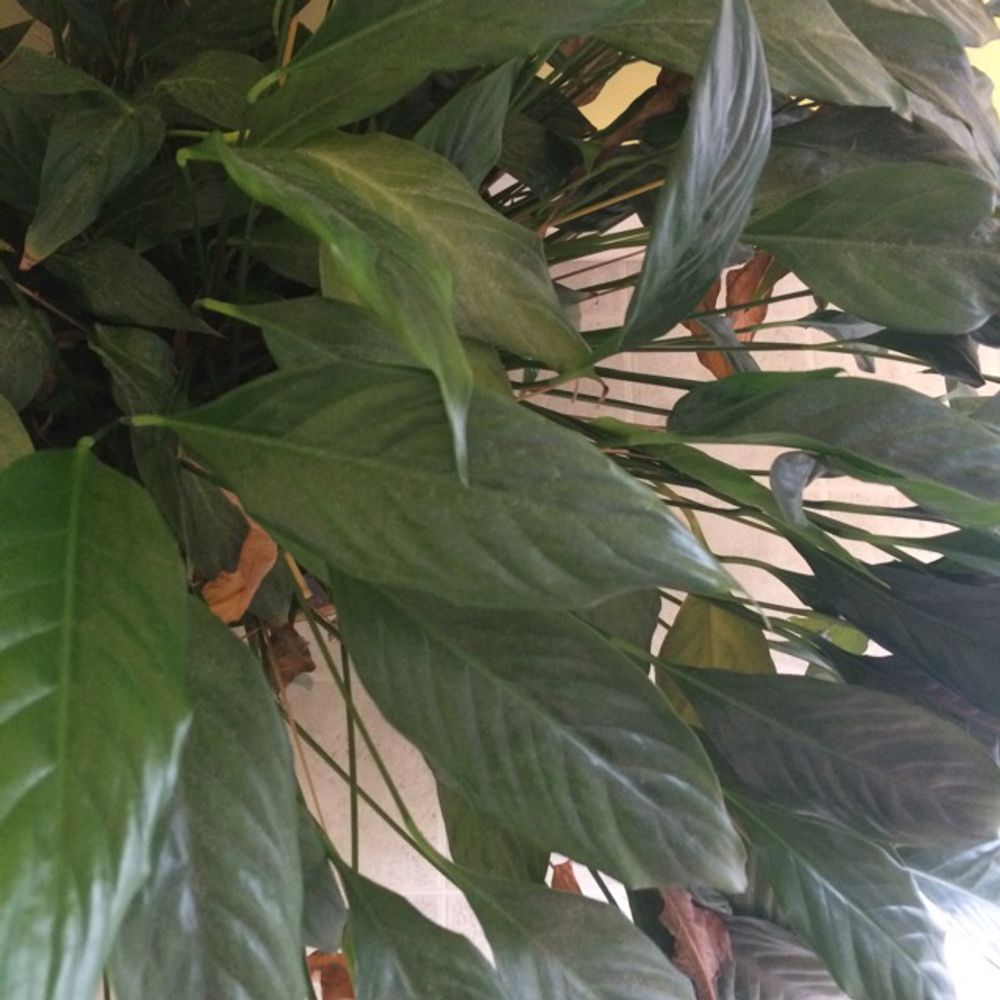Peace lily
(Spathiphyllum lanceifolium)

Description
Spathiphyllum lanceifolium, commonly known as peace lily or white sails, is a species of flowering plant native to the rainforests of Central and South America. It is a member of the Araceae family, which includes more than 3,000 species of plants. The peace lily is a popular indoor plant due to its attractive appearance, ease of care, and air-purifying properties. In this article, we will delve into the characteristics, care, and propagation of Spathiphyllum lanceifolium. Taxonomy Spathiphyllum lanceifolium is a member of the Araceae family, which is also known as the arum family. The genus Spathiphyllum contains approximately 50 species of herbaceous flowering plants that are native to the tropical regions of the Americas and Southeast Asia. The name Spathiphyllum comes from the Greek words spathes, meaning spathe or bract, and phyllon, meaning leaf, referring to the large white spathes that surround the flowers. Description Spathiphyllum lanceifolium is a perennial plant that can grow up to 1.5 meters in height. The plant has a clumping growth habit, with numerous stems emerging from the base of the plant. The leaves of Spathiphyllum lanceifolium are lance-shaped, glossy, and dark green in color. The leaves can grow up to 30 cm in length and 5 cm in width. The plant produces white flowers that are small, inconspicuous, and arranged in a spadix that is surrounded by a white, boat-shaped spathe. The spathe can grow up to 15 cm in length and is the most prominent feature of the plant's inflorescence. The overall appearance of Spathiphyllum lanceifolium is elegant and refined, making it a popular choice for ornamental gardens and indoor decoration. Care Spathiphyllum lanceifolium is a low-maintenance plant that is easy to care for. It prefers bright, indirect light and should be kept away from direct sunlight, which can scorch its leaves. The peace lily can also tolerate low light conditions, but may not flower as frequently. The plant prefers to be kept consistently moist but not waterlogged, as overwatering can lead to root rot. Watering once a week is usually sufficient, but the frequency may vary depending on the environment and season. It is important to ensure that the soil has good drainage to prevent water from accumulating at the bottom of the pot. The peace lily can benefit from occasional misting, especially in dry environments. It is also recommended to wipe the leaves with a damp cloth to remove any dust or debris that may accumulate on them. The plant can be fertilized with a balanced fertilizer once a month during the growing season, which is usually from spring to early fall. Pruning can be done to remove any dead or damaged leaves, but should be done sparingly to avoid stressing the plant. Propagation Spathiphyllum lanceifolium can be propagated through division or stem cuttings. Division is the easiest method and can be done when the plant has outgrown its pot. To divide the plant, carefully remove it from its pot and gently separate the roots into smaller sections. Each section should have at least one healthy stem and root system. The new sections can be planted in their own pots with fresh soil. Stem cuttings can also be taken from the peace lily. To do this, cut a healthy stem that has at least two leaves and a root node. Place the cutting in a container of water or moist soil until it develops roots. Once the cutting has rooted, it can be planted in a pot with fresh soil. Uses Spathiphyllum lanceifolium is primarily grown as an ornamental plant for its attractive foliage and white flowers. The plant is commonly used in indoor settings, such as offices, homes, and public spaces, where it can help to purify the air by removing toxins such as benzene, formaldehyde, and ammonia. The plant is also used in traditional medicine to treat a variety of ailments, including respiratory problems, headaches, and inflammation. In addition, Spathiphyllum lanceifolium is also used in the horticultural industry as a parent plant for producing new hybrid cultivars with different characteristics. Finally, some people also use the leaves of Spathiphyllum lanceifolium for crafting and decorating purposes. Conservation Status As of my knowledge cutoff date of September 2021, Spathiphyllum lanceifolium is not listed on the International Union for Conservation of Nature (IUCN) Red List of Threatened Species. However, like many plant species, its natural habitats are under threat from deforestation, habitat fragmentation, and climate change. Therefore, it is important to monitor the conservation status of this species and take measures to protect its natural habitats to ensure its survival in the wild. Conclusion Spathiphyllum lanceifolium is a beautiful and easy-to-care-for plant that is perfect for indoor and outdoor gardens. The plant's attractive foliage and white flowers, as well as its air-purifying properties, make it a popular choice for homes, offices, and public spaces. With proper care and maintenance, Spathiphyllum lanceifolium can thrive for many years and bring beauty and health benefits to any environment.
Taxonomic tree:







